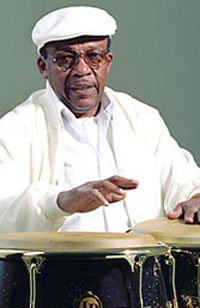11.3 Musical genres of the 20th century (1959-1980).

During this period of 20th-century Cuban music (1959–1980), production was characterized by so-called musical inventions. They all had a common denominator: percussion, used as a foundation for research, renewal, and modification. Percussion was at the origin of all the most important changes that took place in the history of Cuban music during this period of the 20th century (1959–1980). Percussion was the starting point for the modifications to Son as a Cuban singable and danceable musical genre in the 1960s. The goal was to experiment with Son to achieve changes in its sound and make it more innovative.
It is then that a stage of emergence of rhythms and genres in Cuban music begins:
Changüí originates from the eastern region of our Cuban archipelago and its origins date back to the 19th century. The instrumental format used for its performance consists of the tres and various percussion instruments. It was popularized in Havana by Elio Revé, who combined Changüí with Son, giving rise to its variant known at that time as Changüí-Son.
Dengue was originated in the early 1960s by Cuban composer Dámaso Pérez Prado. The essence and most striking aspect of this style is the sound produced by striking drumsticks against a piece of metal. Dengue was popularized and introduced in Cuba by the Roberto Faz Ensemble.
Pilón was a rhythm established by Enrique Bonne and Pacho Alonso and was one of the variations of Son. Its name comes from the instrument used by Cuban peasants to grind coffee and other beans. It is a dance music genre that achieved great popularity among dancers in the 1960s. The instrumental format used for its performance was the conjunto sonero.
Mozambique, by Cuban percussionist Pello el Afrocán, was released in 1963. This rhythm emerged thanks to percussion, as it is the result of the fusion of elements that make up Afro-Cuban roots. Its origins include the Cuban conga and dances belonging to Afro-Cuban culture, among others. It was notably recognized by the public as a highly contagious Cuban rhythm.
The Pa’cá rhythm debuted in early 1964 with the song “Arrímate pa’cá,” performed by the Avilés Brothers Orchestra. It was written by Juanito Márquez, a well-known guitarist from the province of Holguín. It was named “Pa’cá” because it imitated a percussion beat.
Songo is a Cuban musical genre created in the 1970s by the percussionist popularly known as Changuito and Juan Formell, the director of Los Van Van. It is the result of the fusion of Son with Beat and Yoruba music. The instrumental format used for its performance consists of a full percussion set, as well as Afro-Cuban percussion instruments.
Salsa, with its closest ancestor being Son, is the Cuban musical genre that has most influenced it in aspects such as its instrumental format and musical structure. The musical structure begins with a simple melody, followed by a chorus of improvisation. Subgenres of this genre, such as Romantic Salsa, have emerged and developed.








